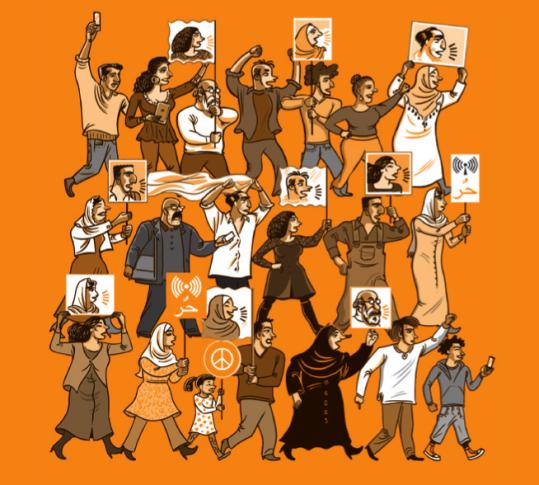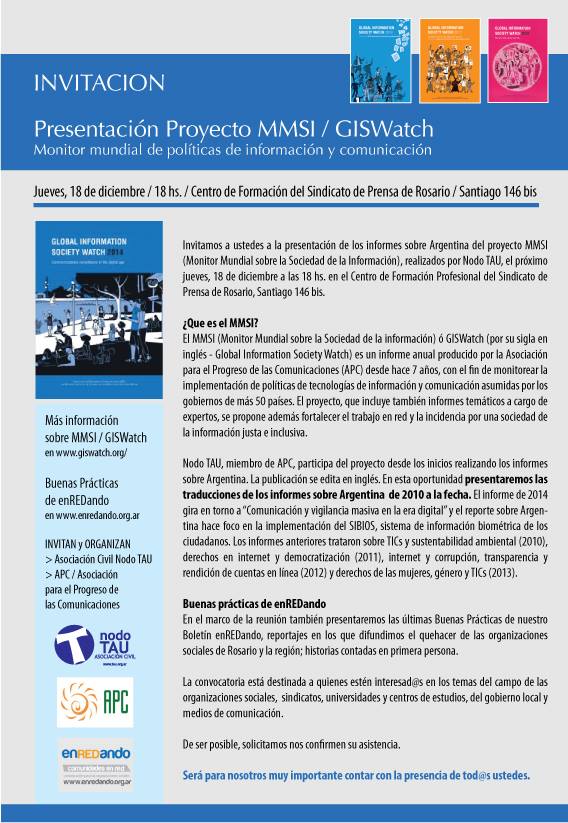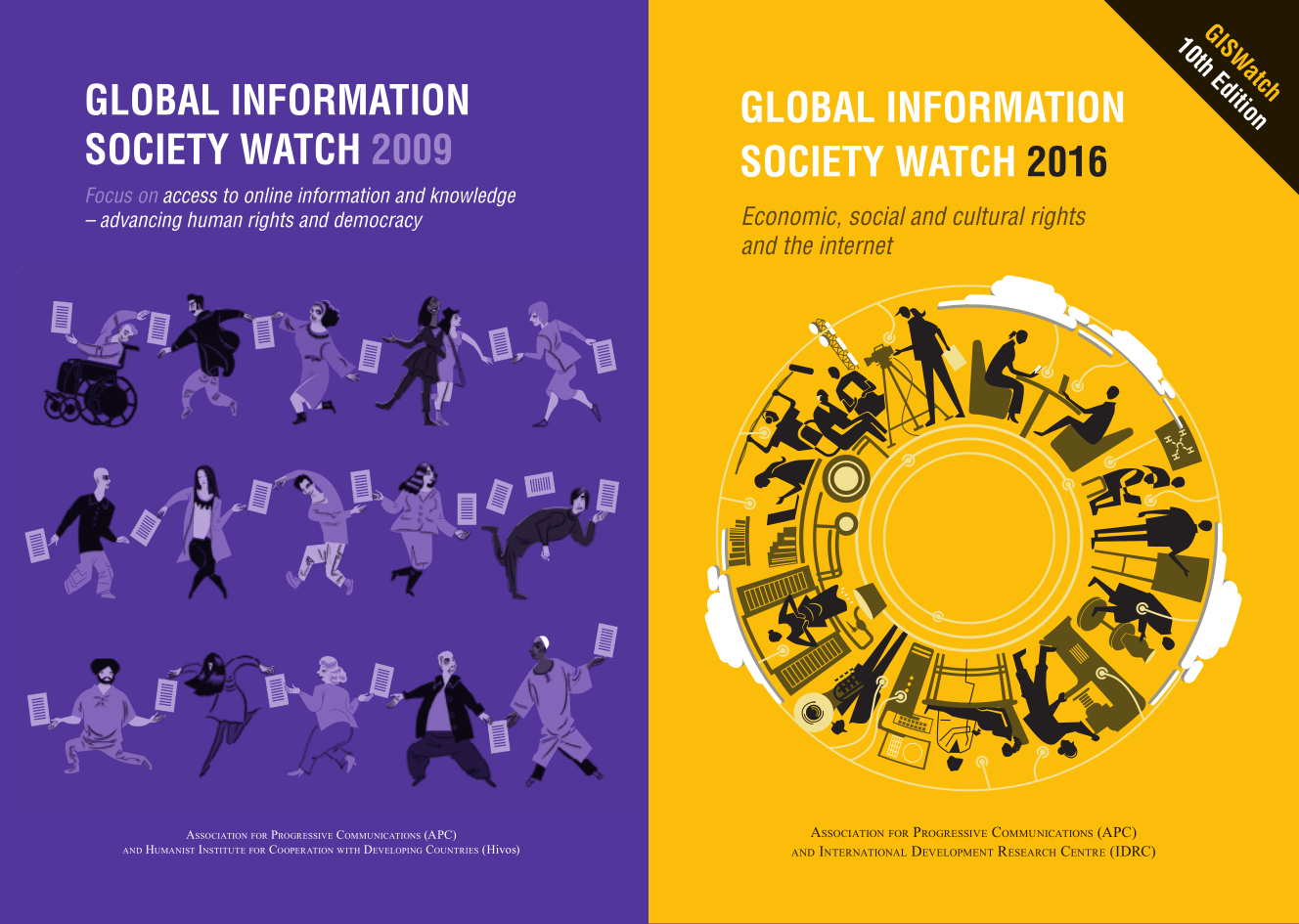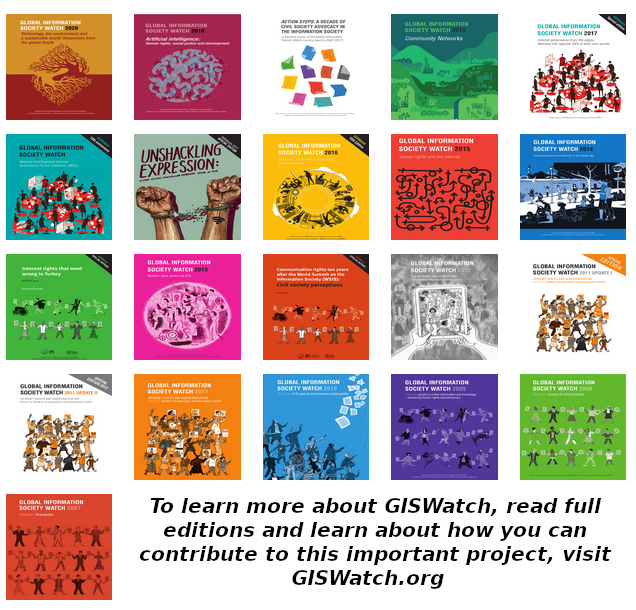
This is the sixth installment in the series celebrating 15 years of APC’s publication, Global Information Society Watch (GISWatch), exploring the origins of this powerful project while looking toward the future. This piece comes from Florencia Roveri, a long-standing author from Nodo TAU who has been contributing significantly to Argentina country reports since the inception of GISWatch.
Our first contact with the GISWatch project was during a workshop on information and communications technology (ICT) policies organised by APC that was held in London in 2006. This workshop was a great experience for me and for Nodo TAU because it allowed us to get in contact with very deep analysis of ICT policies from referents in the field. At that time we were editing a web monitor called "Haciendo Cumbre" – a platform to follow local policies – initiating with it a more systematic scope on ICT policies in our work. The monitor allowed us to follow not only government and private sector tendencies and social initiatives, but also to start opening ICT policies to the issues that were involved.
In the frame of that workshop, the project of a global report was presented and we expressed our interest in participating in it. I met Pablo Accuosto and Alan Finlay in that instance, both working on the first edition of GISWatch. The first chapter we submitted was the report from Argentina in the first edition of GISWatch in 2007 focused on Participation. We wrote it collectively with several members of Nodo TAU, including students from Political Sciences in the local university who were collaborating with us at that moment. This was a very fruitful task for us all, even for the students, because these issues were totally absent from their curricula. From that time on, GISWatch created for us the exercise to define the focus on what ICT policy means and implies.

The experiences of the research and the writing of the reports were always instances in which we learnt not only about the issues but also about the editing process. It was and is really gratifying to be part of a project that involves such a variety of actors, addressing such an extent of focus on a very specialised theme. The fact that each year the challenge is to redefine that theme, enriching and widening the wide scope but also making it more particular and specialised, also motivated us to continue writing the reports each year.
In our first experiences we went out and found what was happening locally on the issue, searching for policies and official definitions, legislation, initiatives, areas in the structure of the state where the issues were developed and treated, and identifying referents, debates, conflicts and actions. Later we started to involve other voices: we interviewed people working in civil society organisations related to the theme of each year. It was and still is very challenging to find a very local approach settled on experiences or cases to define the stories that sustain each report. I remember our report for the 2009 edition focused on human rights and access to the internet in prisons, and the 2016 edition it focused on economic, social and cultural rights (ESCRs) and the experiences of Indigenous communities. The research process was interesting for us and also for the referents we interviewed because they also started to highlight ICT policies in their focus.

For this year's edition we focused on key aspects of ICT policies addressed by civil society organisations during the pandemic, especially those related to access to connectivity and technology, access to information and freedom of expression, and control of circulation and access to health policies actions.
This is one of the aspects that makes GISWatch a unique project – not only because of the wide range of perspectives involved in each edition, sustained in sights from a wide number of experiences and countries, but also because each writer proposes a significant story that allows a very local analysis on the issue reported. I think this is one of the reasons why GISWatch remains relevant, together with each year's definition of the subjects. In this sense, I am sure we can define a timeline of ICT developments in the last 15 years by following GISWatch thematic focuses year after year. The very thoughtful definition of each proposal is wonderful.
GISWatch is a publication that allows us to have a panorama of the instances and potential of ICT in each geographic context, from different perspectives – analytical, economical, geopolitical, social, cultural, technological. Every person interested in understanding this technological context, and the instances of that context in everyday life, including people's rights, government possibilities and even environmental care, will find in the reports rich photos to see and understand. The album of photos is built with such thoughtful criteria in terms of issues, proposed methodologies for researching, structuring, writing and editing the reports, that the experience is always nurturing. We always learn when we get in contact with the GISWatch project.
Thank you and congratulations for this great initiative.
The 2021-2022 edition of GISWatch has just launched, on the theme "Digital futures for a post-pandemic world". Read Nodo TAU's country report on Argentina entitled "Internet rights in a pandemic: How civil society organisations advocated for rights and better policies".
Cover image: GISWatch 2011 on Internet Rights and Democratisation. Read the special edition update of internet rights in Argentina.
GISWatch 15th anniversary series
- Part I: This inaugural piece by long-time GISWatch editor Alan Finlay is the first in a series that celebrates and examines how far we've come and where we need to head next. Read more.
- Part II: This second installment by APC's former executive director Anriette Esterhuysen considers how GISWatch has forged its own path by bringing together theory and action, evidence and experience. Read more.
- Part III: This third installment explores reflections of what it means to write for this long-running project with Y. Z. Ya'u, a long-time Nigeria-based contributor to the report. Read more.
- Part IV: The fourth installment examines how the initial support for GISWatch led to a strong and impactful collaboration with the Swedish International Development Cooperation Agency. Read more.
- Part V: This the fifth installment connects us with Pablo Accuosto, the project's first coordinator, who explains how GISWatch developed into a groundbreaking publication and fundamental source of information. Read more.
- Part VI: The sixth installment comes from Florencia Roveri, a long-standing author from Nodo TAU who has been contributing significantly to Argentina country reports since the inception of GISWatch. Read more.
- Part VII: The seventh installment considers the reflections of researchers around the globe who have contributed to the report year after year, including the latest edition, GISWatch 2021-2022: Digital futures for a post-pandemic world. Read more.
